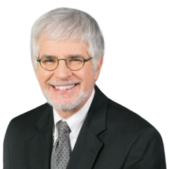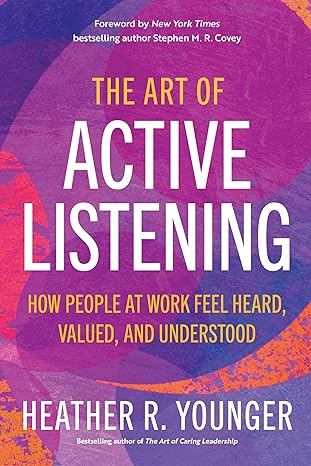
The new year has gotten off to a strong start at Leader to Leader, the quarterly journal published by Wiley where I am Managing Editor.
We recently published our Winter 2024 issue number 111, and I’ve included takeaways from each of the articles below. Also newly published is our special virtual issue on Innovation and Entrepreneurship. We continue to receive strong and positive feedback about our Fall 2023 Special Commemorative issue on the life and work of our Founder and longtime Editor-in-Chief, Frances Hesselbein, who passed away in December 2022 at the age of 107.
In the meantime, I hope you find the articles and takeaways below from our new issue to be useful and valuable throughout 2024.
Learning From Research of the Past
Columnist: Sarah McArthur, Editor-in-Chief, Leader to Leader
Article: “Our Greatest Opposition Is Our Division”
Sample quote:
In addition to the focus and dialogue groups and thought leader panels that were conducted globally, rather than interview current CEOs of the time about leadership of the future, 200 high-potential leaders from 120 international companies were interviewed in depth. And it was from this research that the Global Leader of the Future Inventory was developed.
The qualities included in the inventory are such characteristics as developing people, empowering people, achieving personal mastery, encouraging constructive dialogue, demonstrating integrity, leading change, anticipating opportunities, ensuring customer satisfaction, maintaining a competitive advantage, and according to the study are necessary at varying degrees of importance.
What fascinates me so about this intense 20-year-old research study are the qualities that the authors found would be most important to effective global leaders of the future: thinking globally, appreciating cultural diversity, developing technological savvy, building partnerships and alliances, and sharing leadership.
Budding in necessity at the time of the study, these are absolutely imperative today. Yet, at this crucial point in human history when we should be working together to address monumental challenges with those qualities identified in the study, we find ourselves in a period in which our greatest opposition is our division, and in that paradoxically, we are united.
Get to an Island of Sanity
Author: Margaret Wheatley
Article: “The Work of Sane Leadership”
Sample quote:
An Island of Sanity is a place of possibility and refuge. It is a true island because it sets itself apart from the destructive dynamics, policies, and behaviors that are afflicting people on the mainland. It needs to be an island because there is no other way to preserve and protect our best human qualities. We are not seeking sanctuary; we are seeking contribution. We are magnetized by the island’s offerings–the possibility of working together in harmonious relationships to accomplish meaningful work.
This current culture, with people locked down in fear and self-protection, is destroying our relationships, our work, and our future. It is easier to withdraw than to step forward. It is safer to protect oneself than to be visible. This is the harsh reality that defines the need for Islands of Sanity.
Minimizing Assumptions
Author: Heather R Younger
Article: “Leadership and The Art of Active Listening”
Sample quote:
When seeking to understand, throw out your assumptions. That means entering into a conversation as if you were a blank slate, ready to receive what might be revealed. If you’re to truly give the gift of active listening, and not hijack it for your own purposes, you have to stop predicting what’s next based on the knowledge you already have. Stay open and learn something new. That doesn’t mean you can’t ever assume what people need at work based on your experiences, so that projects and initiatives can move forward smoothly. If you had to consistently stop and check your understanding, you would never get anything done. My point about minimizing your assumptions means not relying on what you infer to be true when it’s time to listen in, dive deeper, and clarify your understanding.
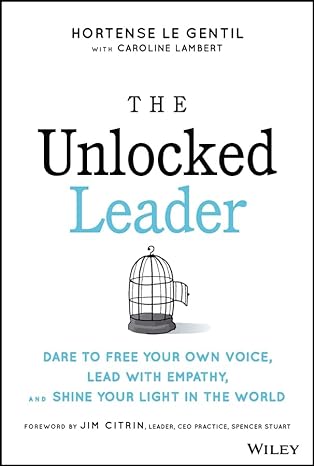
Teamwork as Choreographed Ballet
Author: Ken Pasternak
Article: “Leadership Lessons From Formula 1 Motor Racing”
Sample quote:
The most visible form of teamwork on race weekend is the F1 pit stop. Up to 21 team members participate in a choreographed ballet, changing four tires on the car in plus or minus two seconds. Teams take the execution of the pit stop (a race may include from one to three) very seriously as it can have a major impact on the car’s position when it returns to the track.
Being a pit stop crew member is not a full-time job. Team members undertake this assignment in addition to their “day” jobs as mechanics and engineers. To deliver this kind of performance teams practice up to 1500 times during the year, review videos to determine best positioning and actions, take into consideration clarity of roles, and ensure that the right person is doing the task that is best suited for their capabilities.
The Power of Prosocial Purpose
Author: David Burkus
Article: “How Leaders Can Build Common Understanding, Psychological Safety, and Prosocial Purpose”
Sample quote:
Prosocial purpose comes to life when team members recognize their meaningful contributions that directly influence others. It’s about illuminating the significance of the tasks assigned to teams and illustrating how those efforts have a real impact on others. In recent years, researchers have reevaluated what it truly means to share an inspiring purpose. The desire to engage in work that holds meaning is universal, but our inherently social nature leads us to gauge the importance of our work based on whether it serves others. It’s not enough to comprehend the “why” of our work; we yearn to know “who benefits from our efforts?” Research from Wharton professor Adam Grant suggests that when individuals hear stories of how their team members’ roles positively affect others, they become more motivated to engage in helpful actions. In essence, a prosocial purpose fosters a more collaborative atmosphere.
Your Compass and Your Engine
Author: Hortense le Gentil
Article: “How to Become a Human Leader: Better Connect With Yourself So You Can Better Connect With Others”
Sample quote:
Human leadership is not a one-size-fits-all profile, but rather ground rules that delineate the terrain. We then need to fill in that space with nuances specific to each one of us. How do we do that? We first clarify what drives us—in other words, what is most important to us, what fundamentally motivates us, or what author Simon Sinek calls our “why.” Why is understanding our personal “why” such a fundamental building block to becoming an effective human leader? First, because it acts as both your compass and your engine, both guiding you and pulling you forward. And second, because to be effective, human leaders must be able to inspire that same pull in others around them. And that ability can only spring as an extension of their own “why.”
Gathering Supporting Evidence for Change
Authors: Fernando Carrillo and Liz Wiseman
Article: “Changing Your Mind, One Belief at a Time”
Sample quote:
Many of our attempts to change get off to great starts, but fewer achieve strong finishes. Why? Because we try to fuel change with sheer willpower rather than validate our progress with evidence of improvement.
Nascent behavior and beliefs are fragile and can easily be overpowered by older assumptions until they are strengthened by supporting evidence. The supporting evidence forms a buttress around the budding mindset, much like a brace around a sapling provides stability until the tree is strong enough to stand on its own. Instead of relying on willpower to stick to your commitments, we can make greater and more lasting gains by gathering evidence and building a case for our incipient mindset or behavior.
When you try a new practice or attempt to adopt a new belief, consider it an experiment. Instead of jumping in headlong, think like a scientist who, having formulated a hypothesis, conducts an experiment to test the assumptions and gather evidence to either support or contradict the theory. When you experiment with a new behavior or mindset, take the smallest viable action and then collect evidence.
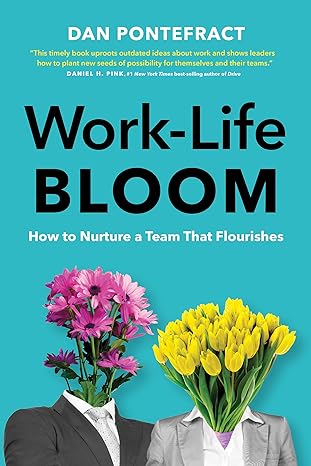
Reassessing Work-Life Balance
Author: Dan Pontefract
Article: “Bloom: A New Leadership Duty of Care”
Sample quote:
Work-life balance has become a zero-sum game, something not only unachievable but a failed refrain by leaders everywhere. Work-life balance should not be the goal for your team members. Or you! I posit that work-life balance as a concept is ineffective because it entirely misses the point and has for decades. We need not look further than the gargantuan growth in people’s stress and anxiety as well as their decreased well-being.
Yet, too many leaders continue to apply work-life balance as an implant for a team member’s happiness. It is not nearly enough to be balanced between work and life. If someone keeps all the plates spinning—as the idiom goes—they can be considered a balanced human being. Is that enough? Is that a way to live? To work? The sheer prevalence of workplace burnout points to the inanity of work-life balance as a goal. Even the World Health Organization decided to officially classify burnout as a syndrome related to “chronic workplace stress that has not been successfully managed.”
Developing Level 5 Leadership Qualities in Future Leaders
Authors: David Taylor and Sarah McArthur
Article: “The Five Key Qualities of Level 5 Leaders and How We Can Develop Them in Future Leaders”
Sample quote:
It starts with defining an overarching purpose and being able to paint a compelling picture of a bold vision. It is founded on always seeking to see things from others’ perspectives, developing empathy and connection with teams and customers, to truly understand opportunities and inflection points. It is scaled through leadership service and the unwavering pursuit of working together to empower creative teams. Finally, it is sustained and scaled through world class coaching to deliver transformational leadership across teams. This makes coaching not just an accelerator to level 5 leadership, but an enabler to develop a level 5 culture across an organization. The level 5 leaders we studied pay tribute to the benefits of leadership coaching. They advocate an approach where all stakeholders are included to create insights, implement change, and follow up to deliver sustainable and long-term improvement.
Fairness, Equality, Justice, and Human Dignity For All
Author: Randal Pinkett
Article: “How to Measure, Analyze, and Improve Diversity, Equity, and Inclusion”
Sample quote:
Since the tragic murder of George Floyd in 2020, matters relating to diversity, equity, and inclusion (DEI) have received significantly greater attention. For example, 2020 and 2021 saw a dramatic increase in corporate commitments to DEI and record hiring of chief diversity officers. According to Reuters, corporations pledged $1.7B to address racial and social issues in the wake of global protests that ensued after George Floyd’s death. Moreover, according to LinkedIn, of nearly 100,000 C-suite hires in the U.S. from January to October 2020, the appointments of chief diversity officers grew 84% as a proportion of the total of senior executives hired that year.
Conversely, 2022 and 2023 have seen increased attacks aimed directly at DEI. From the corruption of Critical Race Theory or CRT, to legislation aimed at limiting discussions of race, privilege, systemic inequities and oppression in schools such as Florida’s Stop W.O.K.E. Act, to bans of related books in libraries such as the Llano County Library System in Texas, to anti-wokeness, to the U.S. Supreme Court’s ruling to overturn affirmative action in higher education admissions, arguably, we are now in an era of “reversity,” or organized resistance to diversity, equity and inclusion programs. Many of these efforts misrepresent what DEI ultimately stands for, which is fundamental and shared principles of fairness, equality, justice, and human dignity for all. DEI has been, and continues to be, a positive force in our democracy and our society.
Enabling Success and Supporting Distributed Decision Making
Authors: Heather E. McGowan and Chris Shipley
Article: “The Time Has Come to Lead Differently from the Way You Were Led”
Sample quote:
If you were in a leadership role before the pandemic, you likely assumed responsibility for your people’s productivity, assigning tasks, directing the work. Now, you must shift your mindset from managing people to enabling their success, setting goals, providing resources, removing roadblocks, and supporting distributed decision making.
Today’s most effective managers, according to the organizational psychologists at SAP SuccessFactors, have moved from a focus on process and oversight and evaluation of performance to instead act as “performance coaches that invite feedback, cultivate psychological safety, and provide individualized interpersonal support.”
Managers, their report noted, are charged with making their people successful. These leaders must “foster meaningful and engaging team member experiences, and empower them for future career opportunities that may lie beyond the team.” Your success, then, depends upon their success. You now work for your team, and so you must ask yourself, How do I make every member of my team the next best version of themselves?
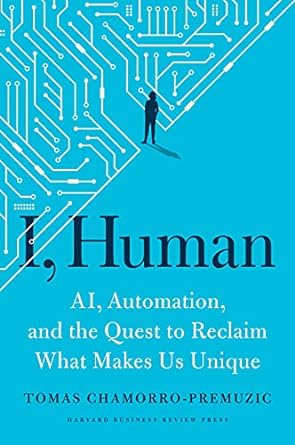
Escape Pervasive Self-Absorption
Author: Tomas Chamorro-Premuzic
Article: “The Power of Leadership Humility in the AI Era”
Sample quote:
To put it simply, AI platforms are designed to encourage inappropriate self-disclosure (sharing unsolicited intimate details about your feelings and what your cat had for breakfast), self-centeredness (making you and your opinions and feelings the dominant topic of your posts), and egotistical behavior (broadcasting your personal perspectives as a proxy for reality or objectivity), which can contribute to antisocial tendencies (ignoring how other people feel, and making little effort to understand those who think differently). However, it’s important to recognize that these platforms thrive because of our pre-existing tendencies toward narcissism. The AI age has made digital narcissism more normalized and adaptive. In the real world, behaving in an obnoxious manner by constantly bragging, sharing unsolicited thoughts, and being unaware of one’s limitations would be deemed unpleasant. However, in the digital realm, social media algorithms amplify such behavior, turning individuals into influencers and depriving them of valuable feedback needed for self-awareness, restraint, humility, and social skills. Given the rampant narcissistic culture and the role of AI in amplifying it, it becomes crucial to consider how we can improve the situation and escape the pervasive self-absorption.
Becoming an Elevated Leader
Author: Ryan K. Gottfredson
Article: “Elevated Leaders Employ Elevated Systems that Elevate their Organizations”
Sample quote:
In my experience as an academic leadership researcher and consultant who has helped develop thousands of leaders, I have learned that there are some leaders who are very sophisticated and operate at a high cognitive and emotional level with positive mindsets. They are what I call “elevated leaders.” I have also learned that there are leaders who are not very sophisticated and do not operate at a high level. They are what I call “struggling leaders.” And, there is everyone in between.
Leaders who are more elevated have a greater ability to effectively navigate their tumultuous environments and ensure long-term success of their teams and organizations, because they employ elevated systems that ultimately elevate their organization. One example of such a leader is Alan Mulally, former Chief Executive Officer (CEO) of Ford as well as Boeing Commercial Airlines. As an elevated leader, in both positions, Mulally employed elevated systems that elevated these organizations.
Job Stressors and Exhaustion
Author: Christina Guthier
Article: “How to Start an Unbiased Conversation About Exhaustion”
Sample quote:
So far, theories on organizational stress and burnout proposed that job stressors, such as time pressure or role conflict, cause strain, such as exhaustion, and then lead to, for example, decreased organizational performance or decreased wellbeing. During the past decades, however, several studies have shown that exhaustion can also lead to more (perceived) job stressors. As the strength of the effects from job stressors on exhaustion and from exhaustion on job stressors varied considerably between studies, there was a need to summarize data across studies and better understand the relationship between job stressors and exhaustion. In 2020, my collaborators Christian Dormann and Manuel Voelkle and I published a meta-analysis in which we did exactly this statistical summary. We analyzed the relationship between exhaustion and job stressors across 48 studies where about 26,000 participants were tracked over time. We found that job stressors increase exhaustion. Not a surprise at all considering that organizational stress theories are proposing this effect. What is actually surprising is that exhaustion increases job stressors even more. So, there is a vicious circle between job stressors and exhaustion.
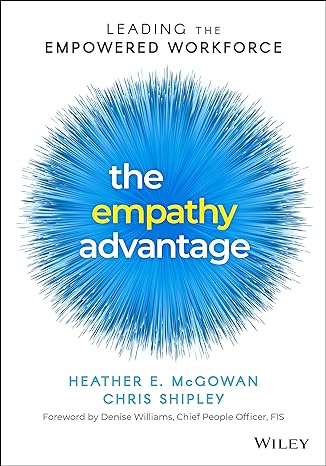
Article: “How Leaders Can Communicate Through Book Authorship”
Sample quote from Josh Bernoff, author of Build a Better Business Book: How to Plan, Write, and Promote a Book That Matters. A Comprehensive Guide for Authors:
Leaders who write books are diverse, but they share one characteristic: they want others to benefit from what they have learned. This is sometimes called being a “thought leader,” but it really goes much further: it means that a leader, benefiting from long and thoughtful experience, develops a unique view of the world and wants others to share it. Leaders who write books about big, new, and credible ideas can bend the world to their perspective—think about what Reid Hoffman did for rapid growth with Blitzscaling or Sheryl Sandberg did for women in leadership with Lean In. Nonprofit, science, and academic leaders have similar opportunities: for example, I have worked with the leader of a medical research lab who wants to show the world how scientific discovery actually works. While a book can lead to speaking opportunities and other financial benefits, true leaders write books to change how the world thinks.
Realistic Depictions of Organizations
Article: “Telling a Tale About Motivational Work Design”
Sample quote from David G. Henkin and Thomas Bertels, authors of Fixing Work: A Tale about Designing Jobs Employees Love:
The typical business book approach of using the example of well-known companies that successfully utilized a new idea often does not capture the real challenges managers experience when trying to implement these ideas—fueling the illusion that there is a silver bullet.
As humans, we like stories. Eli Goldratt’s The Goal is a great example of explaining a concept—the theory of constraints—using a story to communicate a couple of powerful ideas.
The story format allowed us to create a realistic depiction of an organization, with distant supervisors, politics, conflicts, and misaligned incentives. We want to provide our target audience—managers that can make decisions about who does what and how that work gets done—with an applicable, practical roadmap while also highlighting the obstacles that they will face.
